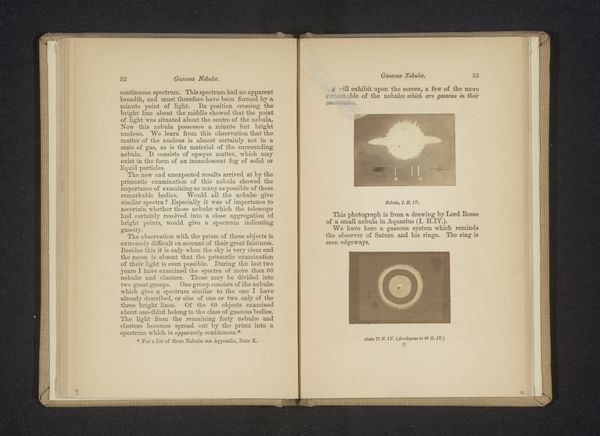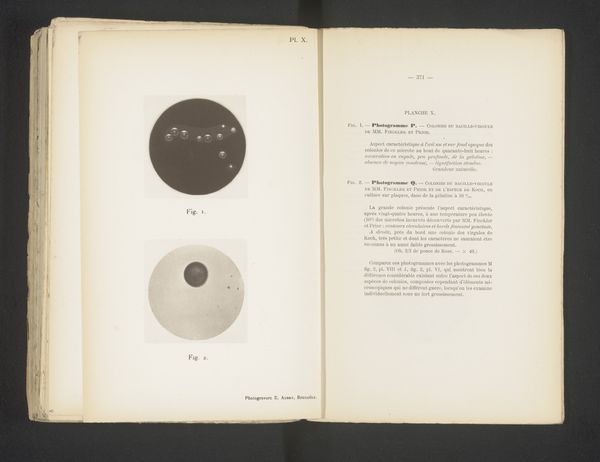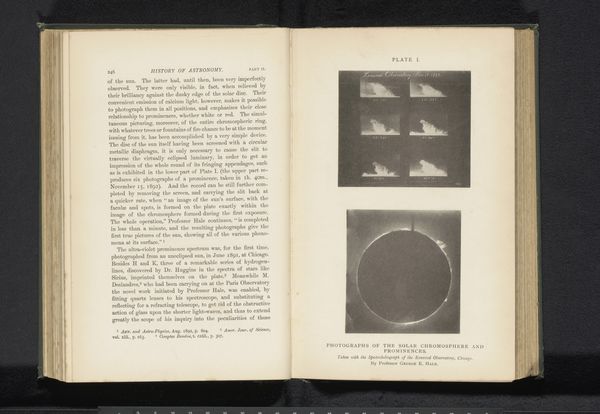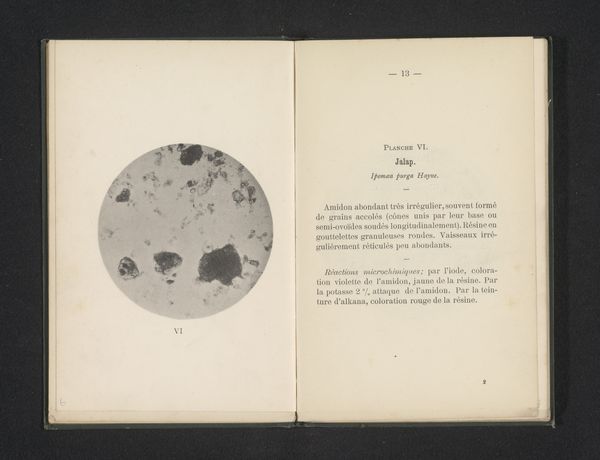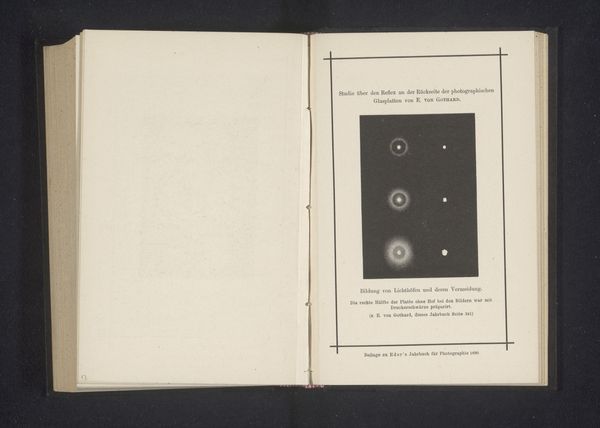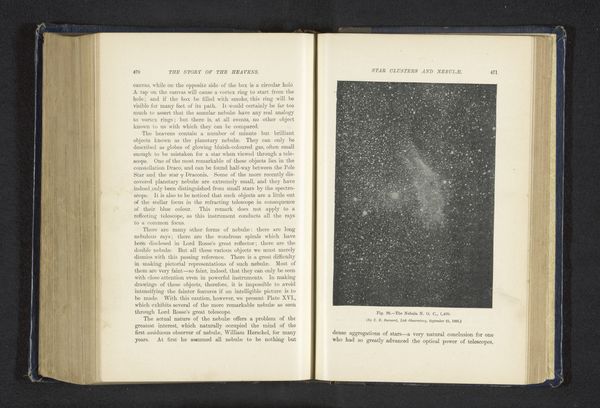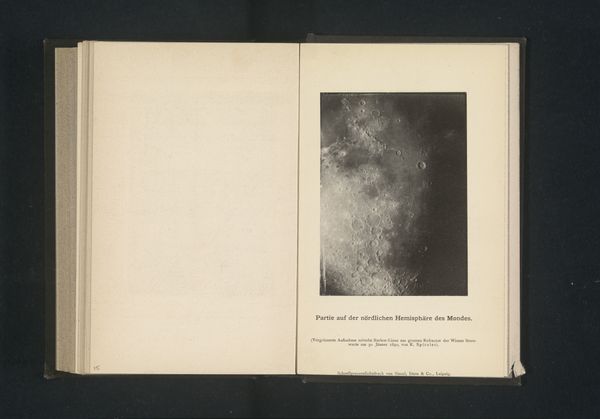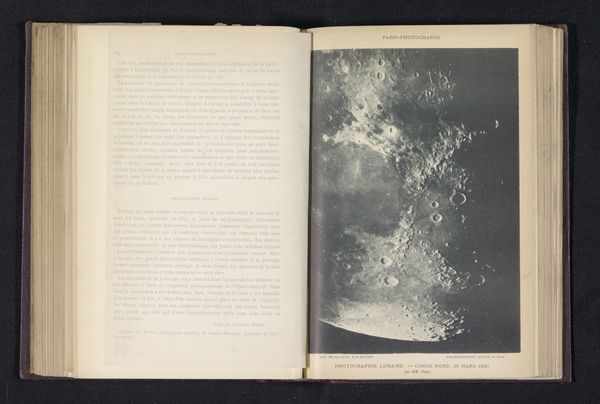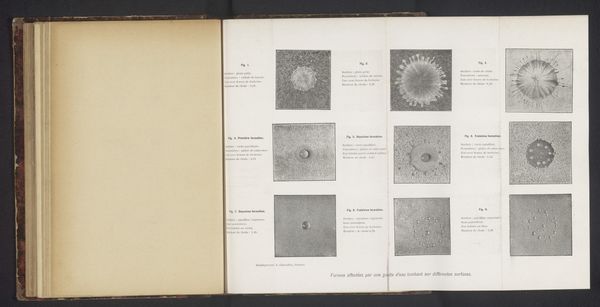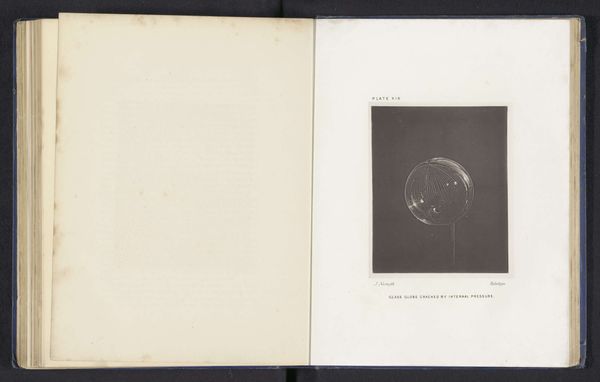
print, photography
# print
#
photography
Dimensions: height 161 mm, width 124 mm
Copyright: Rijks Museum: Open Domain
Curator: Eclipse totale de soleil, or Total Solar Eclipse, by F. Wylands, a print of a photograph. It depicts, of course, an eclipse, and it gives me the uncanny feeling of witnessing an elusive moment in time captured through now somewhat antiquated processes. What catches your attention in this piece? Editor: Well, immediately, I notice the material qualities. It looks like it's printed in a book. It’s not just an image; it’s part of a larger object, perhaps documenting a scientific observation or event. That context shifts my perception quite a bit. Considering that this work combines photography and printmaking, could we consider it commenting on reproducibility? Curator: Precisely! The photograph, originally unique, becomes a reproducible image through the printing process, thus circulated and consumed. This print then allows widespread access to what was, for most, an unseeable event. It raises questions about how scientific knowledge is disseminated and consumed by the public. It becomes a manufactured item, not just a moment captured. What kind of labor do you think might be included to reproduce the printed photographs? Editor: Hmmm…perhaps the artist’s choice of making prints out of the image mirrors society's obsession with easily accessible art during this era? This potentially democratizes the information? Curator: That’s one reading of the work, definitely, as is the discussion about how it has affected production, the division of labor, and even power dynamics that arise in its creation and circulation. Now you start considering the modes of production, which is also an interpretation. This piece might be challenging the distinction between high art and popular documentation, too, don't you think? Editor: This has widened my interpretation! Thank you. Curator: Absolutely. Materiality informs our understanding of its cultural and historical context.
Comments
No comments
Be the first to comment and join the conversation on the ultimate creative platform.
